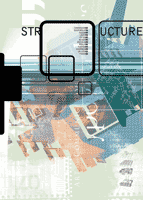In-Depth
One Way to Actively Look at Data Visualization
- By Kathleen Ohlson
- August 1, 2005

Data visualization, or what Forrester Research calls active data visualization,
allows enterprises to interact and visualize data content and its presentation.
Enterprises have always used one form or another of data visualization, including
Microsoft Excel spreadsheets and pie charts, but they are seeking ways to wring
out greater value from their data. The analyst firm defines active data visualization as encompassing many levels
of interaction between users, data content and forms of presentation, allowing
users to directly interact with a visualization and speed up data discovery
and decision making. According to Forrester Research, these are key components
in data visualization: |
Visual data interface: Software allows users to directly interact
with charts, graphs and other forms of data visualization. For example, a user
may want to delete non-clustered dots of a scatter graph that plots products
by affinity. The scatter graph then adjusts its display to the remaining dots,
and the user could still study product affinities by looking at the adjusted
visualization.
Visual query: Visualization streamlines querying when users
select a portion of an active visualization, which becomes a new data set, automatically
charted and ready for the next iteration. For example, with a bar chart of customers
sorted from least profitable to most, a user might select the short bars to
study why some customers aren’t profitable, the tall bars to identify
profitable customers, and midsize bars to display if the needs of average customers
were met.
Dynamic data content: Visual query displays data content as
changing on the fly through user interaction. Most utilities monitor grids by
superimposing colors and shapes over a map to represent load, usage and outage,
Forrester says.
Multiple linked visualizations: Presenting multiple chart
types simultaneously allows users to make multiple interpretations. The charts
must link together so visual query and other operations performed on one chart
are automatically applied to others.
Animation: Businesses can show one time slice after another,
depicting the evolution of time and seasonal fluctuation of specific products
per geographic region. Other important features in data visualization include
geospatial representation, scaling between large and small data sets, drilling
down from summary data to detailed data and representing complex data structures,
such as OLAP. Businesses that implement data visualization software must know
exactly how it would benefit their strategy and which users could be affected.
“They have to look for an application where visualization makes a difference,
for example, operations and sales,” says Keith Gile, a Forrester analyst.
Data visualization software could help a highway department figure out how many
toll booths need to be opened to handle rush-hour traffic. “They have
to think how nicely visualization will complement other features” such
as order fulfillment.
Back to Feature: A View
to the Thrill of Data
About the Author
Kathleen Ohlson is senior editor at Application Development Trends magazine.